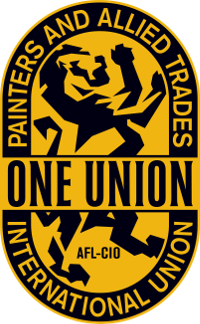The International Union of Painters and Allied Trades is recognized throughout North...
Your company may be eligible for CT state or federal subsidies or to receive a free...

Our Main Office:
79 Bradley Street, Middletown CT 06457. Phone: 860-613-0200
support@iupatdc11.com
Log In-Out

 Our union, like many modern labor unions, was founded in the 19th century to set standards for uniform compensation in the trades and provide a community for workers to share ideas and solve problems. The Brotherhood of Painters and Decorators of America was organized formally in 1887. Within a year, the union boasted a membership of over 7,000 tradesmen and more than 100 local unions. These trade unionists soon realized the power that they had together, rather than staying separate and facing their problems alone. Backed by a growing centralized union, these dedicated organizers won victories over oppressive working conditions that were once thought unchangeable when the union won a half-holiday on Saturday for most of its members. By 1918, the Painters' union successfully established the eight-hour day and a five-day workweek.
Our union, like many modern labor unions, was founded in the 19th century to set standards for uniform compensation in the trades and provide a community for workers to share ideas and solve problems. The Brotherhood of Painters and Decorators of America was organized formally in 1887. Within a year, the union boasted a membership of over 7,000 tradesmen and more than 100 local unions. These trade unionists soon realized the power that they had together, rather than staying separate and facing their problems alone. Backed by a growing centralized union, these dedicated organizers won victories over oppressive working conditions that were once thought unchangeable when the union won a half-holiday on Saturday for most of its members. By 1918, the Painters' union successfully established the eight-hour day and a five-day workweek.
The world plunged into the Great Depression in 1929. Membership in the union fell from 115,000 to approximately 60,000. The American public called for a change in government by electing Franklin D. Roosevelt in 1932. FDR’s New Deal legislation included a number of important laws recognizing workers’ rights and importance of unions.
The contributions of IUPAT members in World War II are a particular highlight in our history. Many of the 145,000 union members worked on government projects during the war and their productivity was unsurpassed. More than 24,000 members of our union served in the armed forces, and hundreds made the ultimate sacrifice for our nation.
During the turbulent 1960s, our union became more deeply involved with politics. Union leaders worked with elected officials in creating landmark legislation like the Civil Rights Act of 1964, the legislation that created Medicare and Medicaid programs, and the creation of the Department of Housing and Urban Development. The union was also involved with the campaign to raise the federal minimum wage.
In 1969, the General Convention came out with the union’s first safety manual, "Play It Safe." Union members were also significantly involved role in passing the Occupational Safety and Health Act of 1970, which created important safeguards for all workers.
Most labor unions suffered during the 1980s with an anti-union atmosphere prevalent in the United States. Membership in labor unions fell across the board.
In recent years, IUPAT has recharged its batteries and begun an aggressive program of organizing workers and educating members about everything from workplace safety to new technology and techniques to use on the job. IUPAT has stepped up its efforts to help working families by becoming active in the political arena. And our union continues to reach out to communities and people in need.
Copyright © 2023 IUPAT District Council 11. All Rights Reserved. Union Made Website: Union Web Services
